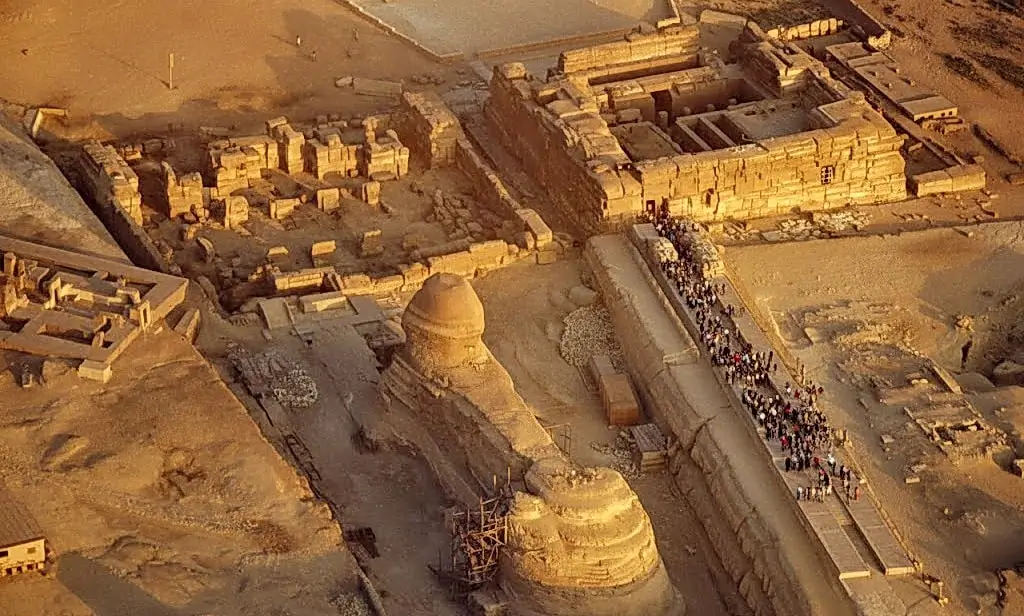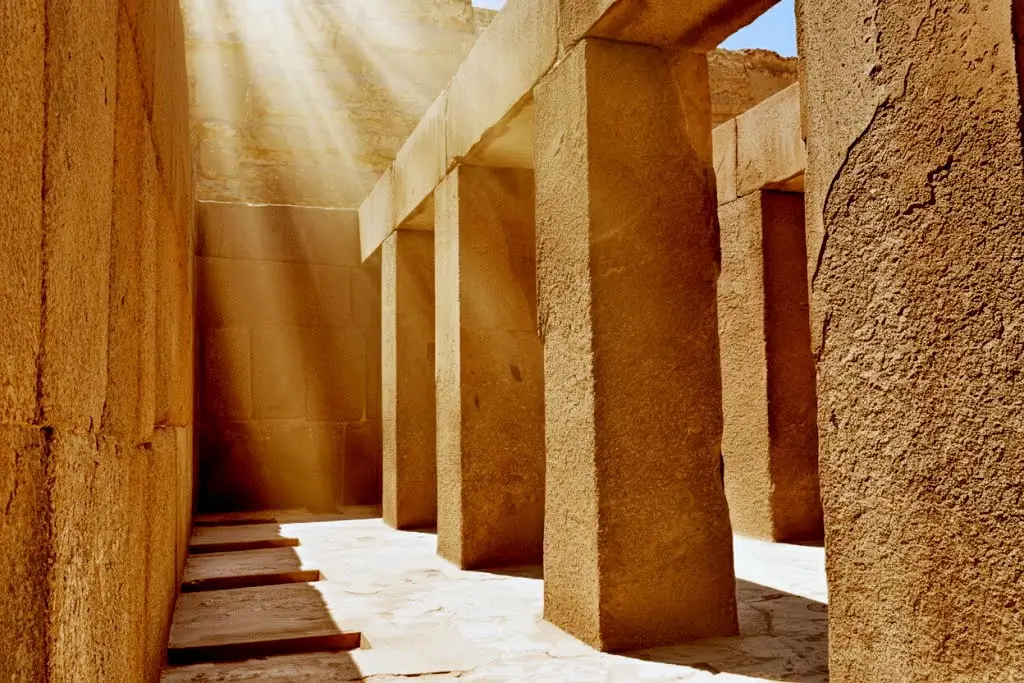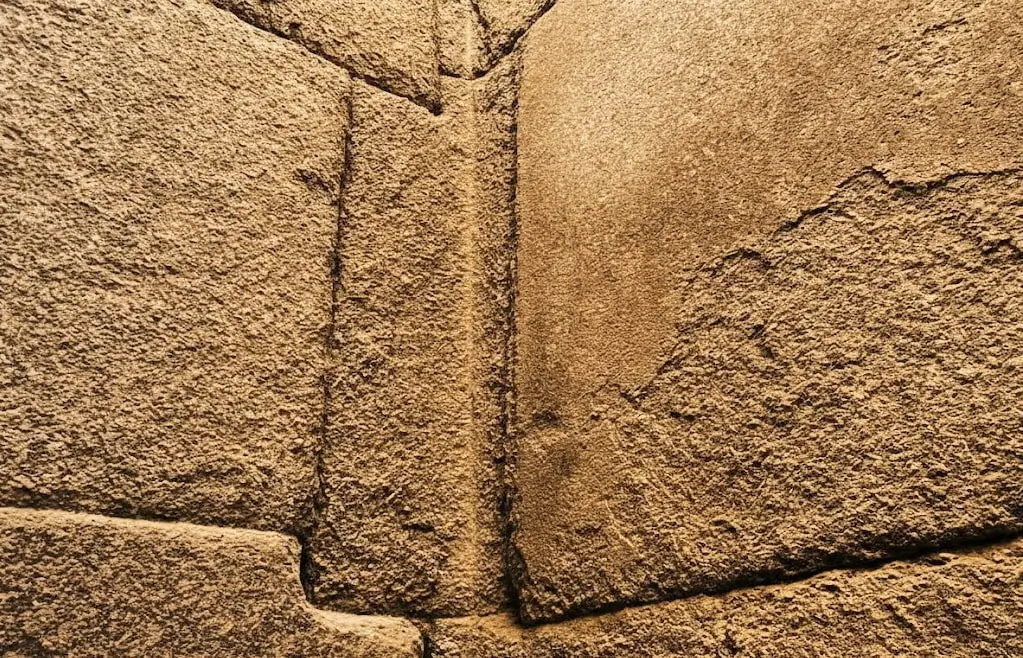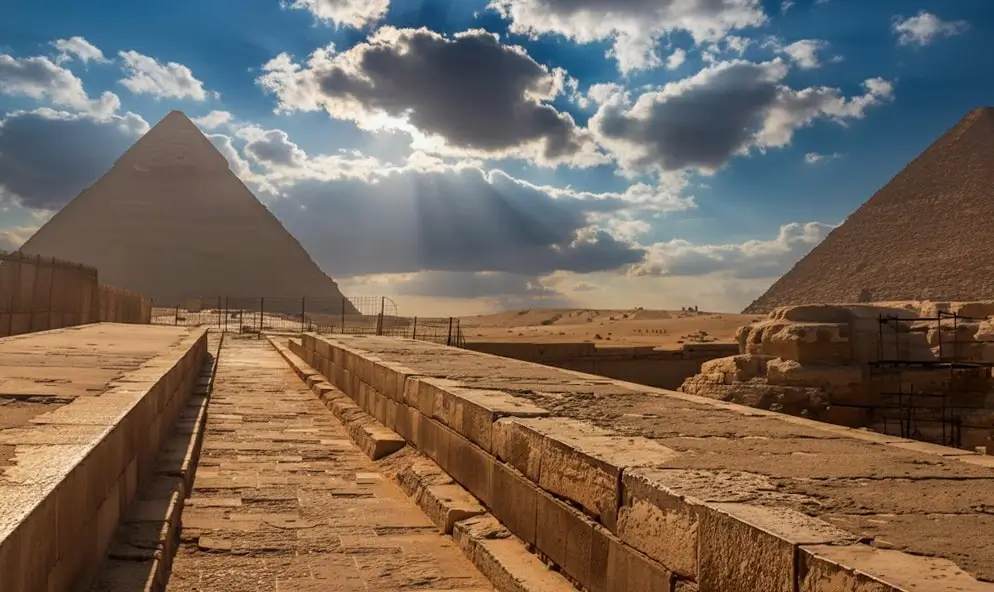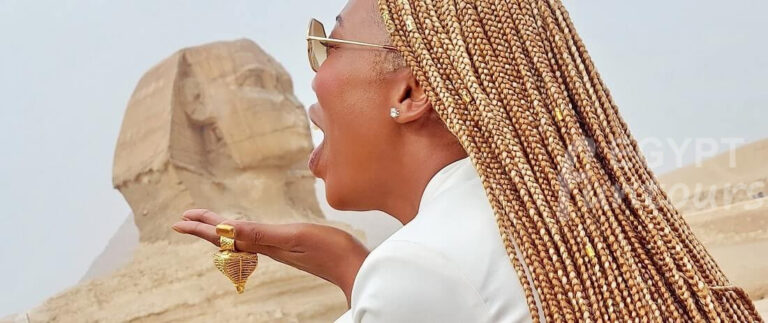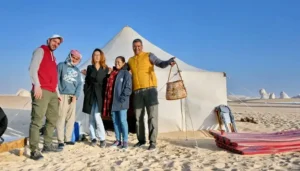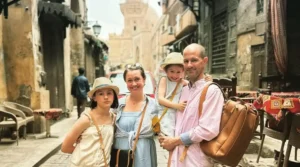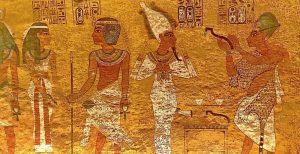Valley Temple of King Khafre
Step back 4,500 years to the Giza Plateau, where you can find one of ancient Egypt’s most awe-inspiring and best-preserved structures: the Valley Temple of Khafre. Pharaoh Khafre of the Fourth Dynasty (c. 2570 BC), who was the son of Khufu, commissioned this temple. However, this wasn’t a place for public worship. Instead, it served as the grand ceremonial entrance for a king’s solemn journey into eternity.
This article explores the Valley Temple’s crucial function in ancient funerary rituals, its minimalist architectural genius, and the profound symbolism that the builders encoded within its very stones.
| Quick Facts: Khafre’s Valley Temple | |
| Pharaoh | Khafre (Chephren) |
| Dynasty | 4th Dynasty, Old Kingdom |
| Date | c. 2570 BC |
| Location | Giza Plateau, Egypt |
| Materials | Red Granite, White Alabaster, Tura Limestone |
| Key Discovery | Diorite Statue of Khafre with Horus |
| Function | Purification & mummification preparation |

